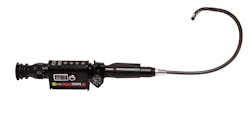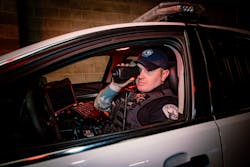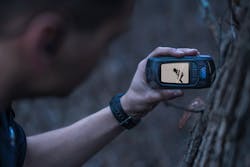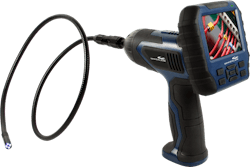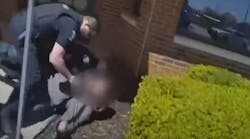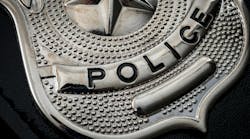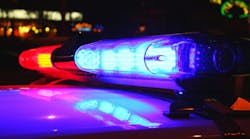In law enforcement, there is often a need for discretion—whether that be because of sensitive or confidential information, policy, or an ongoing investigation. Particularly for investigation it is necessary to have the right tools to get the job done and find out information without alerting suspects of what you’re doing. The progressive advancement of tools over the years has greatly improved, allowing officers to maintain the utmost discretion for their cases.
Surveillance equipment in the past was much more primitive and bulky than modern technology and of course not as discrete over all. These days tools for investigations (especially those undercover) are extremely low profile giving the investigator full advantage to get their work done but remain unseen.
A few tools to make an investigator’s job easier and safer include long distance scopes, cameras with added zoom capabilities, software for monitoring off site, and more. These may sound standard but they make a huge difference in how an undercover operation can go. However, tools used for discretion are no longer used strictly for undercover or covert operations. Though they still play a strong role in that, they are used by investigators, patrolman, and even private detectives. Modern surveillance equipment is not only high tech but it is also extremely discrete, making the undercover work much more successful and helping the officer to maintain the utmost safety.
The history of video surveillance started out almost purely with the use of fiberscopes. These were made up of an optic bundle that would light up an image by conducting light. Though it was able to fit in small spaces, its resolution was poor, dark, and looked like a honeycomb. In order to improve, developers came out with the videoscope. This had a video camera and CCD chip, combined with a bundle of lights using LEDs. A CCD (charge coupled device) chip contains photosites to change the incoming light into usable electrons.
This improvement was not without its challenges as well—the LEDs were still too dark. Bob Levine, President of Zistos, says the company decided to tackle the problem and create products that feature the best of both worlds of the fiberscope and the videoscope. They took the CCD chip and improved it making surveillance abilities more stealthy. This was done by taking the videoscope with lowlight and making it have a fiberscope performance. Zistos also took all of the light factors and combined that with high tech electronics. Levine says they used fiber optics for light as well as a laser to increase visibility. The device was made in two variations to accommodate different types of investigation: infrared and an IR illuminator increasing tactical applications and making them more stealth like. “The investigator can see the situation well without the subject seeing them,” says Levine.
6 Examples on the market
• Seek Thermal’s options include their Reveal ShieldPRO in the company’s Tactical Series and a thermal imaging camera that attaches to the bottom of your smartphone, the Seek Compact Series. Built specifically for law enforcement and border patrol, the RevealShieldPRO features a 320x240 thermal image sensor with a 24-degree field of view, a 825-yard detection range with a 115-yard identification distance, a 3.5-hour battery runtime and intuitive software for easy operation.
The Seek Compact Series is comprised of an infrared smartphone adapter for both iPhone and Android devices available in a few options depending on your needs. It easily attaches to your phone’s micro USB port and has a detection range of 1,000 to 1,800 feet depending on the model (standard, XR and PRO). The company provides a list of compatible phones on their website. The CompactPRO, the most advanced of the series, features a 320x240 thermal sensor, a 32-degree field of view, a focusable lens, and is capable of detecting temperatures from -40 to 626 degrees Fahrenheit.
• Nightforce spotting scopes such as the TS-82 and the TS-80 Hi-Def 20-60x are both durable and waterproof. The clarity of these is excellent with high contrast providing clear images even at a magnified level. Not only are images clear but they are also illuminated by the internal prism design and are equipped with the ability to perform in low light conditions. The TS-82 and the TS-80 have focus rings that are large and easy to manipulate and the TS-80 has a ring that locks into place with a 360-degree rotation capability.
• Most of these tools allow officers and investigators to properly and safely conduct an operation without being in the area they are watching too closely. The advantage of being close but not too close makes all the difference in a successful, covert operation. ShotSpotter’s Missions enhances the ability to find out up-to-the-minute details about a situation from phone or computer through patrol management software. Over time, the software will integrate with the company’s ShotSpotter gunfire detection—creating a single view of crime data for enhanced situational awareness. It works by analyzing historical and current criminal data from a service area providing investigators actional intelligence to direct patrols and develop more efficient tactics. ShotSpotter Missions recognizes trends and attempts to suggest proactive recommendations to officers for tactical advice. ShotSpotter’s gunfire detection system allows the investigator to remain further off-the-scene yet keep situational awareness. A network of acoustic sensors uses specialized sound detection software to identify gunfire and attempts to triangulate a location. Once an incident occurs (or is detected), data is sent to the incident review center (IRC). Acoustic analysts review the data and report findings to police. Officers are sent information of where the event took place as well as details which, according to ShotSpotter, can be sent in 60 seconds to mobile data terminals or through the ShotSpotter smartphone app.
You can find additional products to aid your investigation through the Officer.com Product Guide. Search in various categories such as Investigations, Inspection Equipment, Security & Surveillance as well as others. Visit Officer.com/directory to find products and companies you need.

